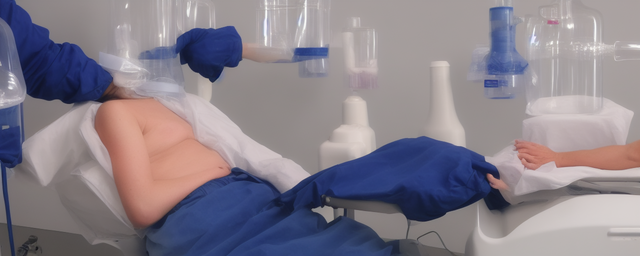
输液套管针的危害
原|2024-04-25 13:20:59|浏览:85
The use of intravenous catheters, also known as IV cannulas or infusion sets, carries certain risks and potential hazards. These risks can be associated with the insertion, maintenance, and removal of the catheter. Here are some of the potential dangers of using IV catheters:
1. Infection: One of the most common risks associated with IV catheters is the potential for infection. Improper insertion, poor hygiene practices, or prolonged use of the catheter can increase the risk of bacterial contamination and subsequent infection.
2. Phlebitis: Phlebitis is the inflammation of the vein where the catheter is inserted. This can cause pain, redness, and swelling at the site of insertion. Phlebitis can occur due to mechanical irritation from the catheter, chemical irritation from the fluids being infused, or bacterial contamination.
3. Thrombosis: IV catheters can sometimes cause blood clots to form in the vein, leading to thrombosis. This can obstruct blood flow in the vein and potentially lead to serious complications such as pulmonary embolism if the clot dislodges and travels to the lungs.
4. Air embolism: If air enters the bloodstream through the IV catheter, it can travel to the heart and lungs, causing an air embolism. This can be a life-threatening condition that requires immediate medical intervention.
5. Nerve damage: Improper insertion or placement of the IV catheter can result in nerve damage, leading to pain, numbness, or weakness in the affected limb.
6. Infiltration: Infiltration occurs when the IV fluid leaks into the surrounding tissue instead of entering the vein. This can cause tissue damage, swelling, and discomfort at the infusion site.
7. Extravasation: Similar to infiltration, extravasation is the leakage of vesicant or irritant fluids into the surrounding tissue, causing tissue damage, necrosis, and potential long-term complications.
To minimize these risks, healthcare providers should follow proper insertion techniques, maintain strict aseptic practices, monitor the catheter site regularly, and promptly address any signs of complications. Patients should also be educated on the signs of infection or other complications and report them to their healthcare provider immediately.
猜你喜欢
- 茶的分类及代表品种
- 六大茶类的代表名茶分别有
- 茶的类型和代表
- 六大茶叶的分类及产地
- 庙的分类及代表
- 藻的分类及其代表
- 茶的分类及代表茶品特点
- 茶的分类及代表茶
- 简述茶类的分类及其代表性名茶
- 六大茶类的分类及代表茶
- 动物分类及代表
- 糖的分类及代表
- 茶的分类及代表茶叶
- 茶的分类及代表图
- 茶的分类及代表作
- 茶器按质地的分类及代表茶器
- 茶的分类及代表名茶教学设计
- 简述茶的分类及代表性名茶
- 请写出乌龙茶的分类及代表茶
- 法国雅文邑白兰地系列
- 雅文邑白兰地介绍
- 1952年法国雅文邑白兰地
- 法国雅玛邑白兰地
- 纽波利顿獒
- 法国犬品种
- 南非獒犬的优缺点
- 波尔多獒犬寿命
- 波兰狩猎犬
- 波尔多犬和罗威纳犬对比
- 波尔多犬和杜高对比
- 世界十大凶犬
- 护卫犬排行榜前十名
- 大红袍怎么泡效果好
- 大红袍怎么泡不开
- 大红袍怎么泡茶
- 大红袍怎么泡出来没颜色
- 大红袍怎么泡不苦
- 大红袍怎么泡多久
- 大红袍怎么泡才正确的特点
- 大红袍怎么泡没有柴味儿
- 大红袍怎么泡放多少合适
- 花香大红袍怎么泡
- 大红袍怎么泡茶好
- 大红袍是怎么泡的
- 大红袍怎么泡水好喝
- 大红袍用玻璃杯怎么泡
- 大红袍怎么泡味道浓一些
- 十大排名果花茶
- 十大花茶组合排名
- 十大花茶品种大全
- 十大花茶功效
- 十大花茶销量排行榜
- 十大花茶有哪些
- 十大花茶品种
- 十大花茶推荐
- 十大花卉排行榜
- 十大花卉
- 十大花茶调理内分泌
- 九五至尊秦昊明月关山
- 红茶冲泡工艺
为你推荐






































































